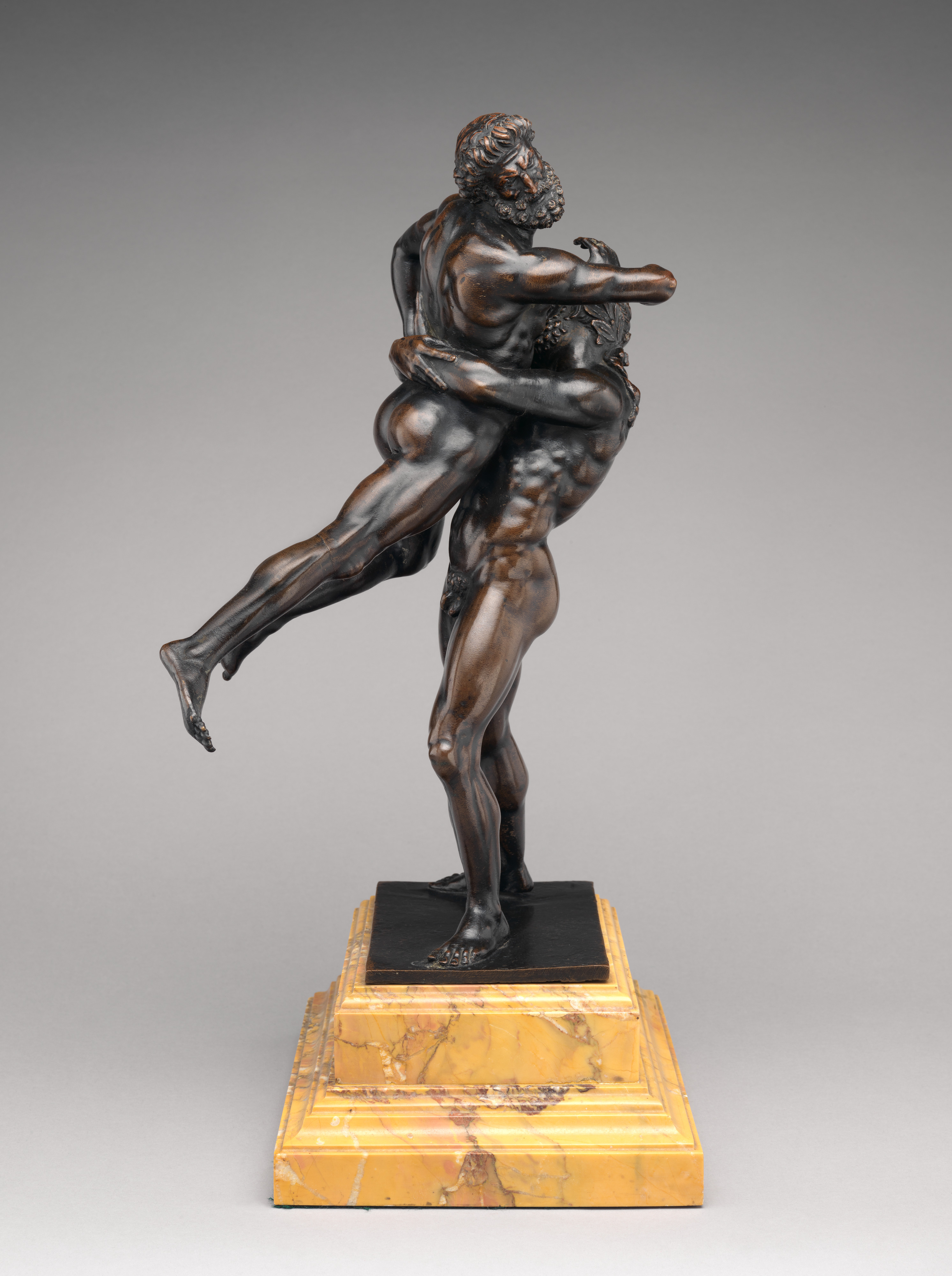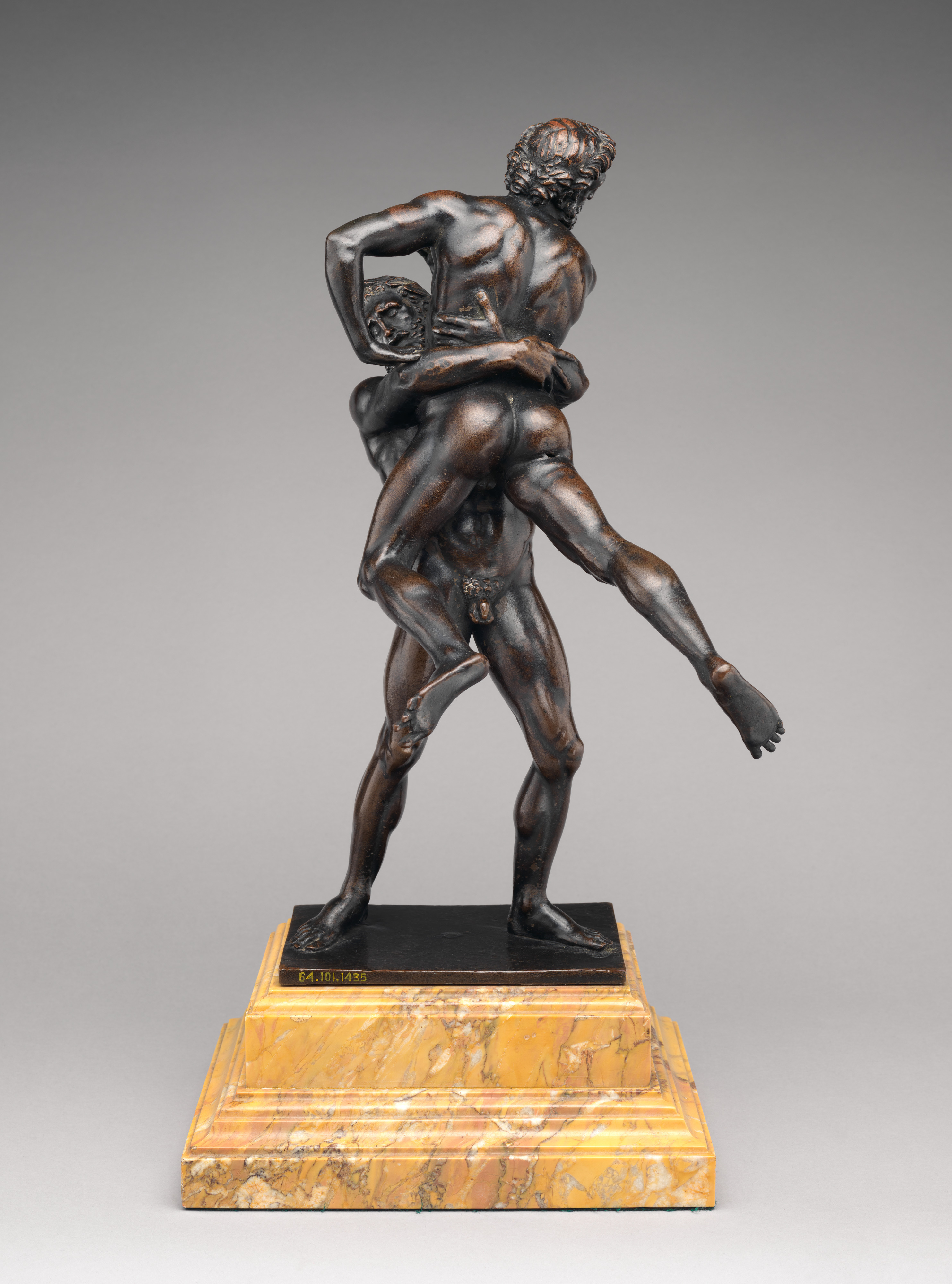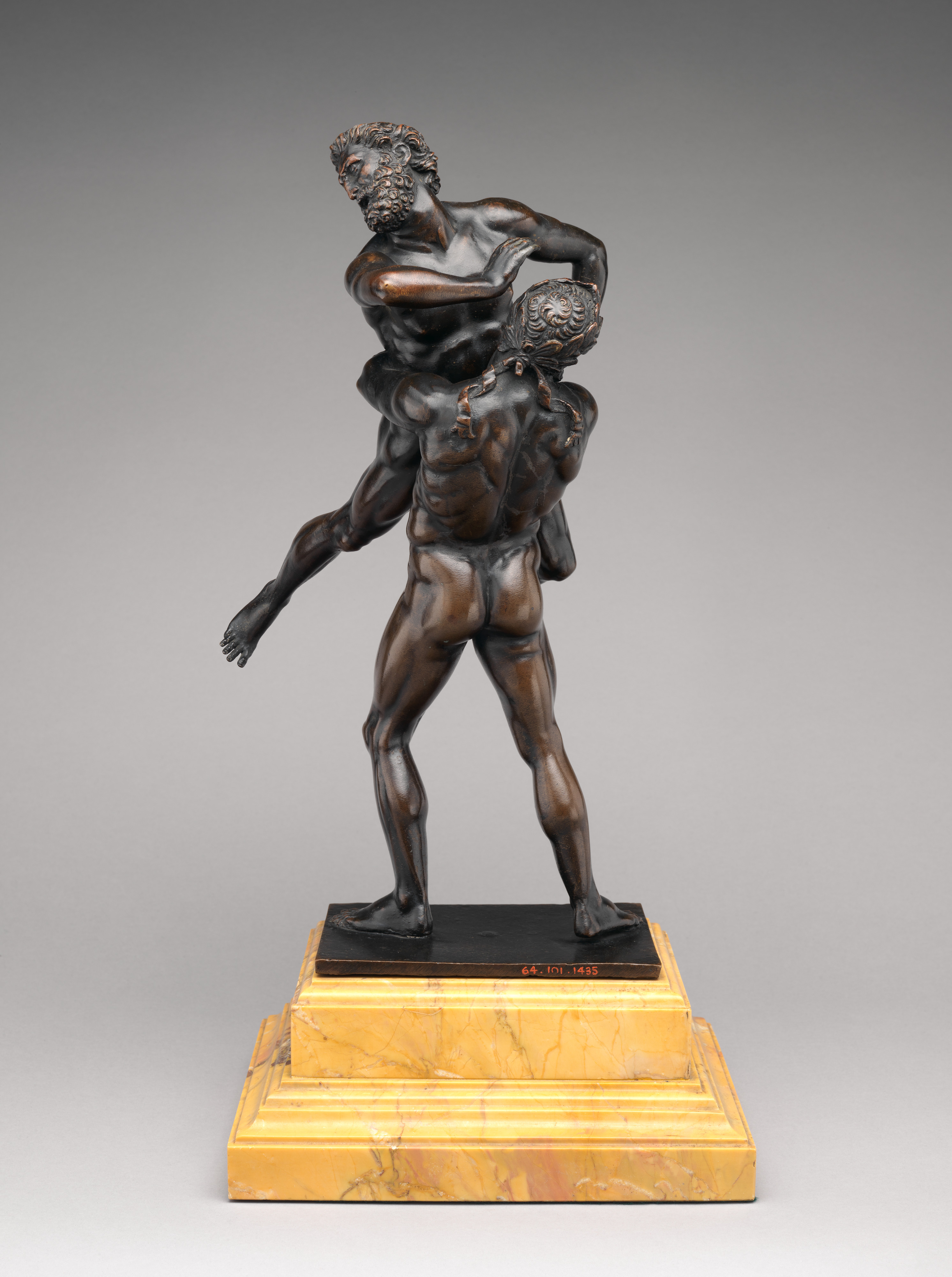Hercules and Antaeus
Not on view
In Greek mythology, Antaeus was the son of Poseidon and Gaia, and derived his strength from contact with the earth. In the Renaissance, the scene of Hercules wrestling Antaeus was popular across media, particularly in bronze, where the medium’s specific properties allowed artists to conceive of elaborate figural groups (see also cat. 195). There are well-known bronze groups after models by Antonio Pollaiuolo and Antico, for example. By contrast, the artist responsible for the present composition, in which Antaeus’s outstretched legs are flung out in an exaggerated fashion, is still a mystery.
Once owned by the British industrialist Leon Bagrit, the bronze subsequently entered the collection of Judge Irwin Untermyer before he gave it to The Met. Curator Yvonne Hackenbroch had published other bronzes from Bagrit’s collection in the 1950s before she turned her attention to Untermyer’s holdings, and one wonders if she had a hand in the judge’s acquisition.[1] In the 1962 catalogue of Untermyer bronzes, she attributed the Hercules and Antaeus to Francesco da Sant’Agata, drawing supposed similarities between the bronze group and the signed boxwood Hercules in the Wallace Collection.[2]
The present group, in reality, has little to do with the Wallace Hercules, nor with a Hercules and Antaeus in the National Gallery of Art, Washington, D.C., that had previously been attributed to Francesco (in opposition to Sergei Androsov’s 1976 opinion that the Untermyer bronze is the only one that should be assigned to him).[3] A nearly identical cast of the same composition, formerly in the Abbot Guggenheim collection, was once considered a product of Riccio’s workshop but more recently placed in the circle of Vittore Gambello.[4] This bronze is of the same dimensions but of higher quality than The Met’s, which, taking into account the crudeness of the figures’ faces and hair, the bulbous quality of their musculature, and the presence of an integrally cast rectangular base, should be dated no earlier than the seventeenth century. There is no reason to think, however, that it must date to as late as the nineteenth century, as previously catalogued by the museum. The bronze is cast in two parts, with Antaeus and the arms of Hercules comprising one section, Hercules and the base the other.[5] The two parts were joined together by solder and likely mechanical means difficult to ascertain through X-radiographs. Our bronze and the existence of individual figures, including an Antaeus at Yale and a Hercules formerly in Berlin, suggest the original model possessed a popularity that endured well beyond the early sixteenth century.[6]
-JF
Footnotes
(For key to shortened references see bibliography in Allen, Italian Renaissance and Baroque Bronzes in The Metropolitan Museum of Art. NY: The Metropolitan Museum of Art, 2022.)
1. Hackenbroch 1959.
2. Inv. S273; see Warren 2016, vol. 1, pp. 242–57, no. 57.
3. NGA, 1942.9.119; see Washington 1994, p. 168.
4. Camins 1988, cat. 5; Christie’s, New York, January 27, 2015, lot 27.
5. R. Stone/TR, October 26, 2011. Stone notes the lack of typical signs of nineteenth-century casting sophistication, such as thin, even walls, cores extending through the entire length of limbs, ingenious mechanical joins, or flexible molding materials.
6. Seymour 1962, pp. 5–16, figs. 1, 5, attributes the New Haven and Berlin bronzes to Riccio.
Due to rights restrictions, this image cannot be enlarged, viewed at full screen, or downloaded.
This artwork is meant to be viewed from right to left. Scroll left to view more.





